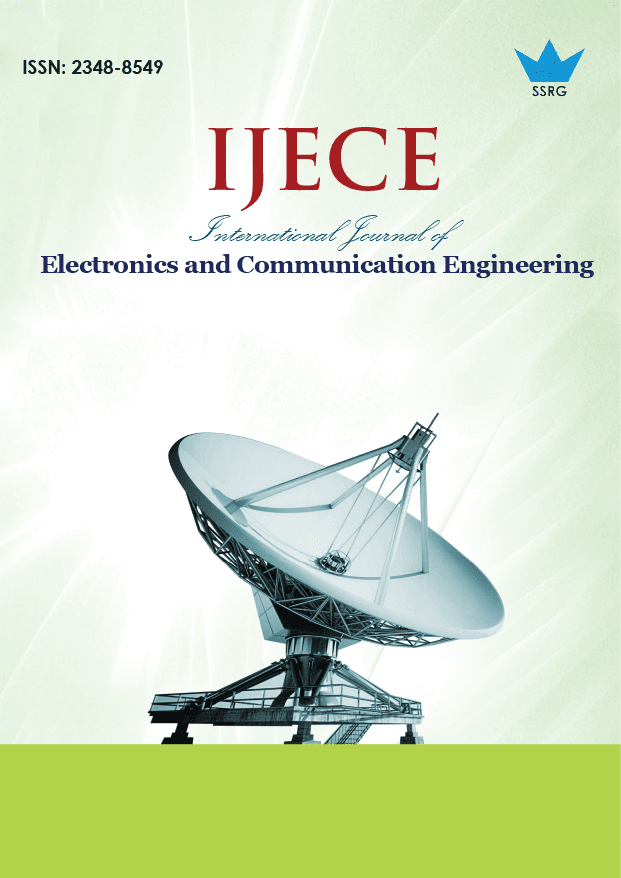Rule-Based Cyber Security Model with Adaptive Interval Type-2 Fuzzy Neural Networks in Multi-Sensor Data Monitoring

| International Journal of Electronics and Communication Engineering |
| © 2025 by SSRG - IJECE Journal |
| Volume 12 Issue 10 |
| Year of Publication : 2025 |
| Authors : Radhika Rajoju, P. Swetha |
How to Cite?
Radhika Rajoju, P. Swetha, "Rule-Based Cyber Security Model with Adaptive Interval Type-2 Fuzzy Neural Networks in Multi-Sensor Data Monitoring," SSRG International Journal of Electronics and Communication Engineering, vol. 12, no. 10, pp. 129-146, 2025. Crossref, https://doi.org/10.14445/23488549/IJECE-V12I10P112
Abstract:
In the context of multi-sensor data monitoring systems, especially in critical domains like Healthcare, cybersecurity plays a pivotal role in ensuring the integrity, confidentiality, and availability of the data being collected, transmitted, and analyzed. These systems often gather sensitive physiological and behavioral information from multiple sensors—such as ECG, EEG, temperature, blood pressure, and movement sensors-making them prime targets for cyberattacks. Unauthorized access or tampering with this data can lead to serious consequences, including incorrect diagnoses, compromised patient safety, and data privacy breaches. In this paper, a Rule-Based Adaptive Type-2 Fuzzy Neural Network (RbAFNN) and an HMM are used to manage data from multiple sensors in healthcare monitoring. With interval Type-2 fuzzy logic and the adaptive neural network, the approach can properly work with uncertain and imprecise data and quickly self-adjust to new changes in patients. With HMM, sensor data are handled properly over time, so fault detection and health classification improve. Experiments with several healthcare-related datasets find that the RbAFNN-HMM model delivers high accuracy, a high sensitivity level, and a low number of false positives in the tasks of health monitoring and cyber threat detection with efficient performance in real-time. Experimental analysis stated that the accuracy of detecting a phone call with the RbAFNN-HMM model is more than 96%, it has a 97% sensitivity, and its false positives are no more than 3%. The system is very accurate in detecting threats, as its threat detection is around 92% for different attack types, and it usually mitigates threats with a success rate above 89%. These results prove that the framework helps deliver correct, prompt, and secure health care, thereby making it a dependable solution for changing and uncertain situations in hospitals. The framework’s solid cybersecurity features ensure that important data is safe and better protected against DoS, spoofing, and data injection. The advanced solution offered by the system is reliable, smart, and ensures security in unstable and uncertain situations.
Keywords:
Healthcare Monitoring, Cybersecurity, Multi-Sensor, Type-2 Fuzzy, Hidden Markov Model (HMM), Neural Network, Rule-Based Model.
References:
[1] Yunlong Lv, “Integrating Motion Sensors based on Deep Neural Networks Into Training and Monitoring Systems using a Fuzzy Comprehensive Evaluation Method,” Computers and Electrical Engineering, vol. 122, 2025.
[CrossRef] [Google Scholar] [Publisher Link]
[2] Joseph Bamidele Awotunde et al., “An Enhanced Internet of Things Enabled Type-2 Fuzzy Logic for Healthcare System Applications,” Recent Trends on Type-2 Fuzzy Logic Systems: Theory, Methodology and Applications, pp. 133-151, 2023.
[CrossRef] [Google Scholar] [Publisher Link]
[3] Hao Shen et al., “Observer-Based Control for Interval Type-2 Fuzzy Systems under PDT-Based DoS Attacks,” IEEE Transactions on Systems, Man, and Cybernetics: Systems, vol. 55, no. 6, pp. 3780-3790, 2025.
[CrossRef] [Google Scholar] [Publisher Link]
[4] Mirosław Kozielski, Piotr Prokopowicz, and Dariusz Mikołajewski, “Aggregators Used in Fuzzy Control-A Review,” Electronics, vol. 13, no. 16, pp. 1-20, 2024.
[CrossRef] [Google Scholar] [Publisher Link]
[5] Junjie Li, Xianxin Meng, and Chao Li, “Research and Application of Multi-Fusion Algorithm in Equipment Safety Hazard Prediction and Analysis Scenarios,” International Journal of High Speed Electronics and Systems, 2025.
[CrossRef] [Google Scholar] [Publisher Link]
[6] Min-Fan Ricky Lee, “A Review on Intelligent Control Theory and Applications in Process Optimization and Smart Manufacturing,” Processes, vol. 11, no. 11, pp. 1-33, 2023.
[CrossRef] [Google Scholar] [Publisher Link]
[7] Mohammed Y. Alzahrani, “Enhancing Drone Security through Multi-Sensor Anomaly Detection and Machine Learning,” SN Computer Science, vol. 5, 2024.
[CrossRef] [Google Scholar] [Publisher Link]
[8] Liang Xin, Guang He, and Zhiqiang Long, “Secure State Estimation for Multi-Sensor Cyber-Physical Systems Using Virtual Sensor and Deep Reinforcement Learning Under Multiple Attacks on Major Sensor,” IEEE Transactions on Network Science and Engineering, vol. 12, no. 3, pp. 1470-1481, 2025.
[CrossRef] [Google Scholar] [Publisher Link]
[9] Georgios Potamos, Eliana Stavrou, and Stavros Stavrou, “Enhancing Maritime Cybersecurity through Operational Technology Sensor Data Fusion: A Comprehensive Survey and Analysis,” Sensors, vol. 24, no. 11, pp. 1-26, 2024.
[CrossRef] [Google Scholar] [Publisher Link]
[10] Resul Daş, and Gurkan Tuna, “Multi-Sensor Data Fusion Perspective for Smart Grid Analytics,” Cyber Security Solutions for Protecting and Building the Future Smart Grid, pp. 81-115, 2025.
[CrossRef] [Google Scholar] [Publisher Link]
[11] Xiangyu Kong, and Guang-Hong Yang, “Multi-Sensor Resilient Fusion Estimation for Speed Measurement and Positioning System of Trains under Cyber Attacks and Physical Faults,” IEEE Transactions on Intelligent Vehicles, vol. 9, no. 12, pp. 8166-8174, 2024.
[CrossRef] [Google Scholar] [Publisher Link]
[12] Wojciech Szynkiewicz, Ewa Niewiadomska-Szynkiewicz, and Kamila Lis, “Deep Learning of Sensor Data in Cybersecurity of Robotic Systems: Overview and Case Study Results,” Electronics, vol. 12, no. 19, pp. 1-23, 2023.
[CrossRef] [Google Scholar] [Publisher Link]
[13] Zhijie Hu et al., “An Integrated Multi-Sensor Fusion Architecture for Advanced Laboratory Security Surveillance,” 2024 4th International Conference on Electronic Information Engineering and Computer Communication (EIECC), Wuhan, China, pp. 67-70, 2024.
[CrossRef] [Google Scholar] [Publisher Link]
[14] Jinxing Hua, and Fei Hao, “Fusion and Detection for Multi-Sensor Systems under False Data Injection Attacks,” ISA Transactions, vol. 132, pp. 222-234, 2023.
[CrossRef] [Google Scholar] [Publisher Link]
[15] Ankush D. Sawarkar, and Anjali Deepak Hazari, “IoT Forensic Cyber Activities Detection and Prevention with Automated Machine Learning Model,” Journal of Sensors, IoT & Health Sciences, vol. 2, no. 2, pp. 1-15, 2024.
[CrossRef] [Google Scholar] [Publisher Link]
[16] Xinyi Liu et al., “Multi-Sensor Data Privacy Protection with Adaptive Privacy Budget for IoT Systems,” 2024 IEEE Conference on Communications and Network Security (CNS), Taipei, Taiwan, pp. 1-9, 2024.
[CrossRef] [Google Scholar] [Publisher Link]
[17] Jayameena Desikan et al., “Hybrid Machine Learning-Based Fault-Tolerant Sensor Data Fusion and Anomaly Detection for Fire Risk Mitigation in IIoT Environment,” Sensors, vol. 25, no. 7, pp. 1-28, 2025.
[CrossRef] [Google Scholar] [Publisher Link]
[18] Zhijian Cheng et al., “Distributed Consensus Estimation for Networked Multi-Sensor Systems under Hybrid Attacks and Missing Measurements,” Sensors, vol. 24, no. 13, pp. 1-16, 2024.
[CrossRef] [Google Scholar] [Publisher Link]
[19] Qiang Li, “Artificial Intelligence Detection System based on Multi-Sensor and Wireless Communication,” Intelligent Decision Technologies, vol. 18, no. 3, pp. 2577-2588, 2024.
[CrossRef] [Google Scholar] [Publisher Link]
[20] M. Supriya et al., “Design of EV Control Monitoring of Multiple Approach Fault Detection Using Multi Sensor IoT System,” 2024 Ninth International Conference on Science Technology Engineering and Mathematics (ICONSTEM), Chennai, India, pp. 1-6, 2024.
[CrossRef] [Google Scholar] [Publisher Link]
[21] Arroju Shivani et al., “Detection and Mitigation of Web Attacks with End-To-End Deep Learning,” Journal of Computer Allied Intelligence, vol. 3, no. 3, pp. 56-80, 2025.
[CrossRef] [Google Scholar] [Publisher Link]
[22] Aiguo Li, and Zhuoping Qiang, “Multi-Sensor Data Fusion Method based on Adaptive Kalman Filtering,” Proceedings of the 2023 13th International Conference on Communication and Network Security, pp. 306-311, 2023.
[CrossRef] [Google Scholar] [Publisher Link]
[23] R. Spencer Hallyburton et al., “What Would Trojans Do? Exploiting Partial-Information Vulnerabilities in Autonomous Vehicle Sensing,” arXiv preprint, pp. 1-18, 2023.
[CrossRef] [Google Scholar] [Publisher Link]
[24] Sadaf Hafeez et al., “Multi-Sensor-Based Action Monitoring and Recognition via Hybrid Descriptors and Logistic Regression,” IEEE Access, vol. 11, pp. 48145-48157, 2023.
[CrossRef] [Google Scholar] [Publisher Link]
[25] Milos Stanojevic et al., “Cyber Security Risk in Pervasive Environments of Unobtrusive cECG-Monitoring System during Driving,” 2025 24th International Symposium INFOTEH-JAHORINA (INFOTEH), East Sarajevo, Bosnia and Herzegovina, pp. 1-5, 2025.
[CrossRef] [Google Scholar] [Publisher Link]
[26] Miao Hua, and Yanyu Yang, “Application of Multi-Sensor Fusion in Evaluation of Automotive Passive Safety System,” 2025 Asia-Europe Conference on Cybersecurity, Internet of Things and Soft Computing (CITSC), Rimini, Italy, pp. 773-777, 2025.
[CrossRef] [Google Scholar] [Publisher Link]

 10.14445/23488549/IJECE-V12I10P112
10.14445/23488549/IJECE-V12I10P112